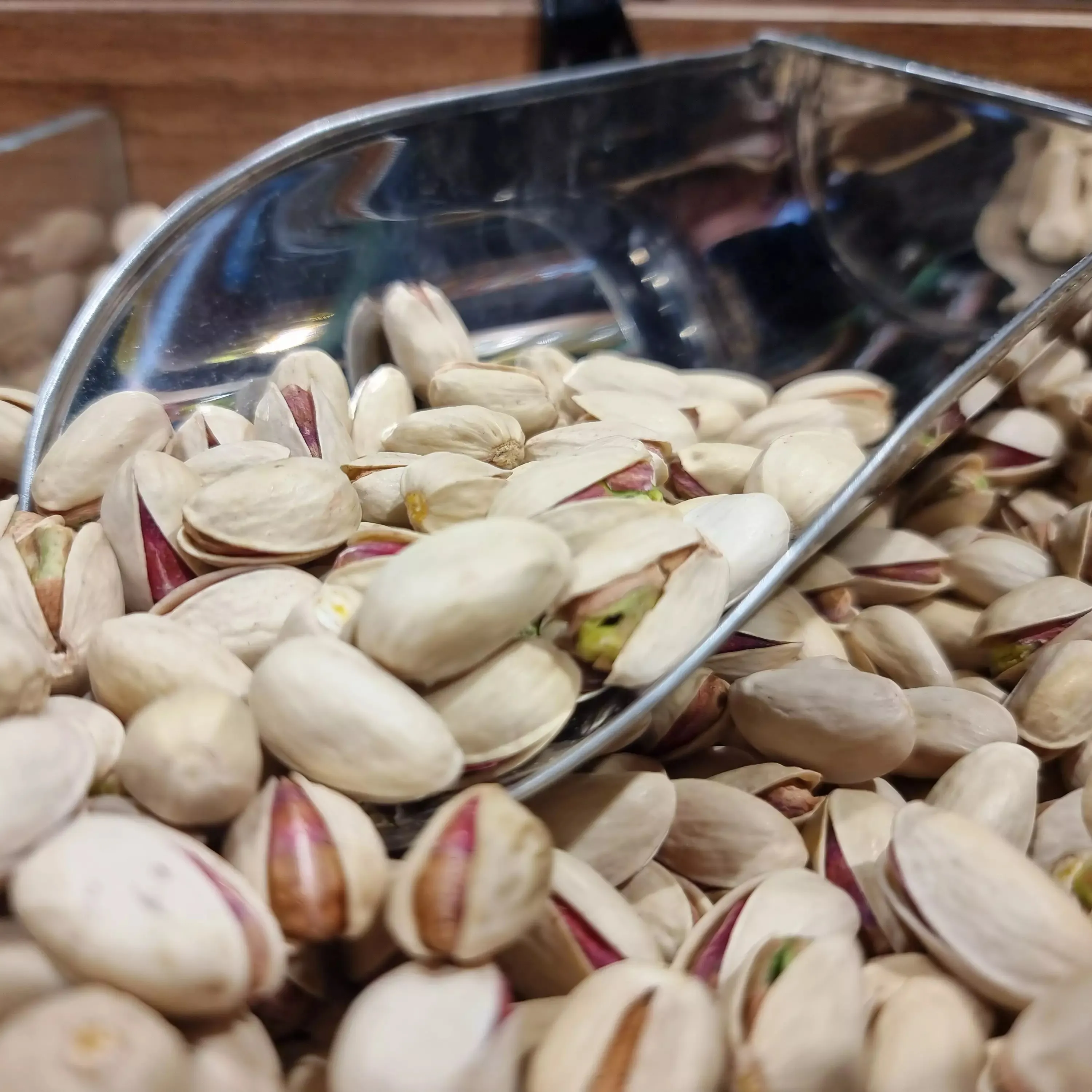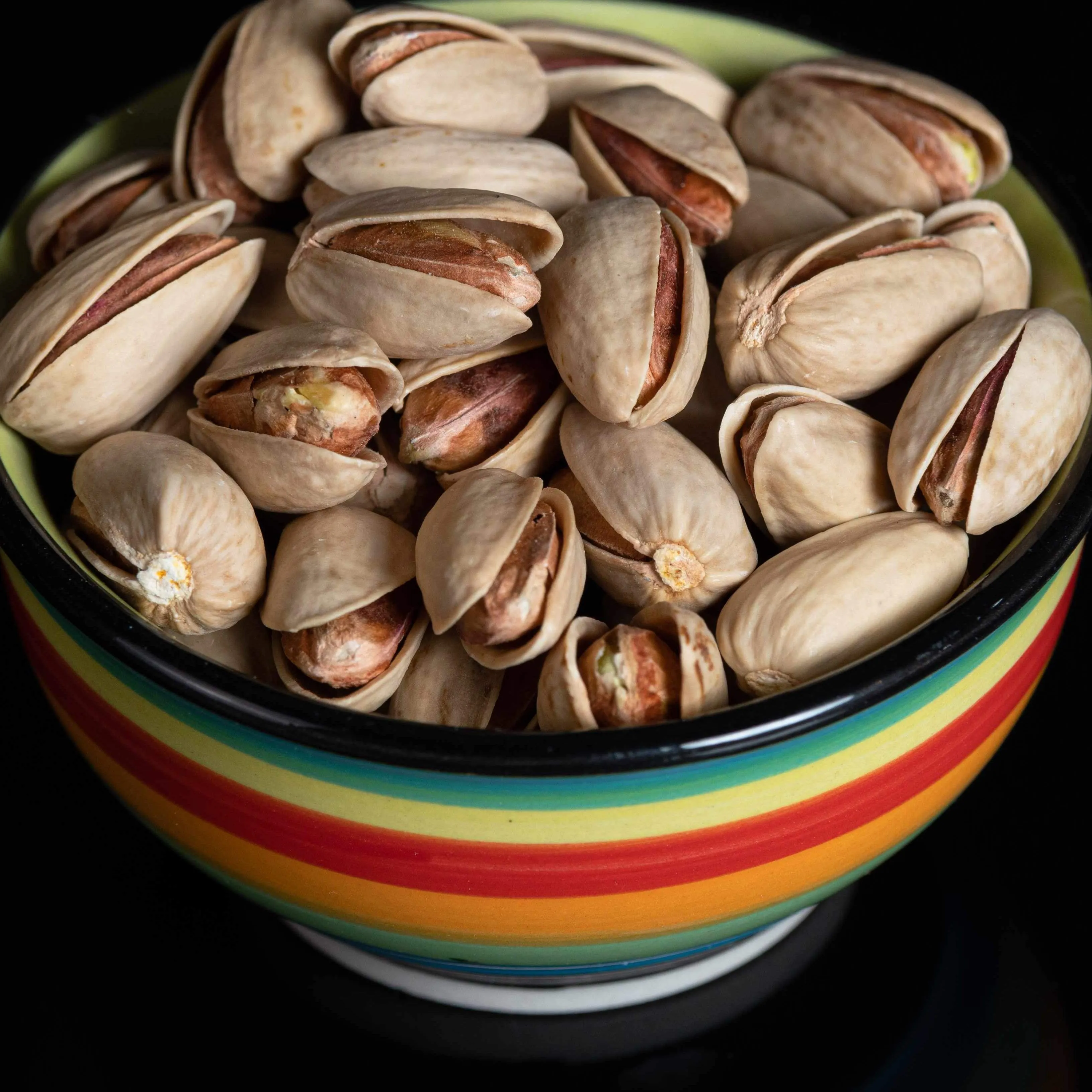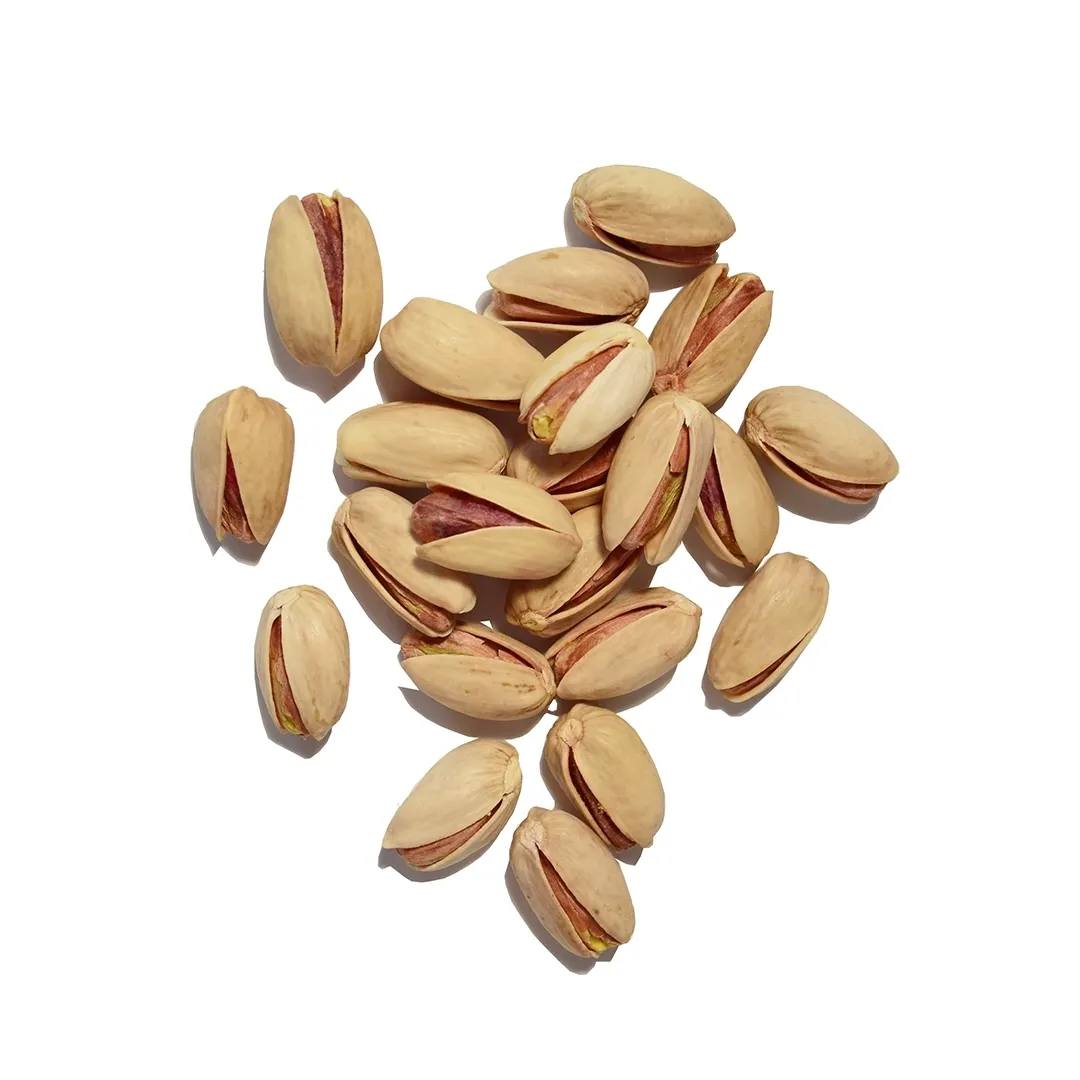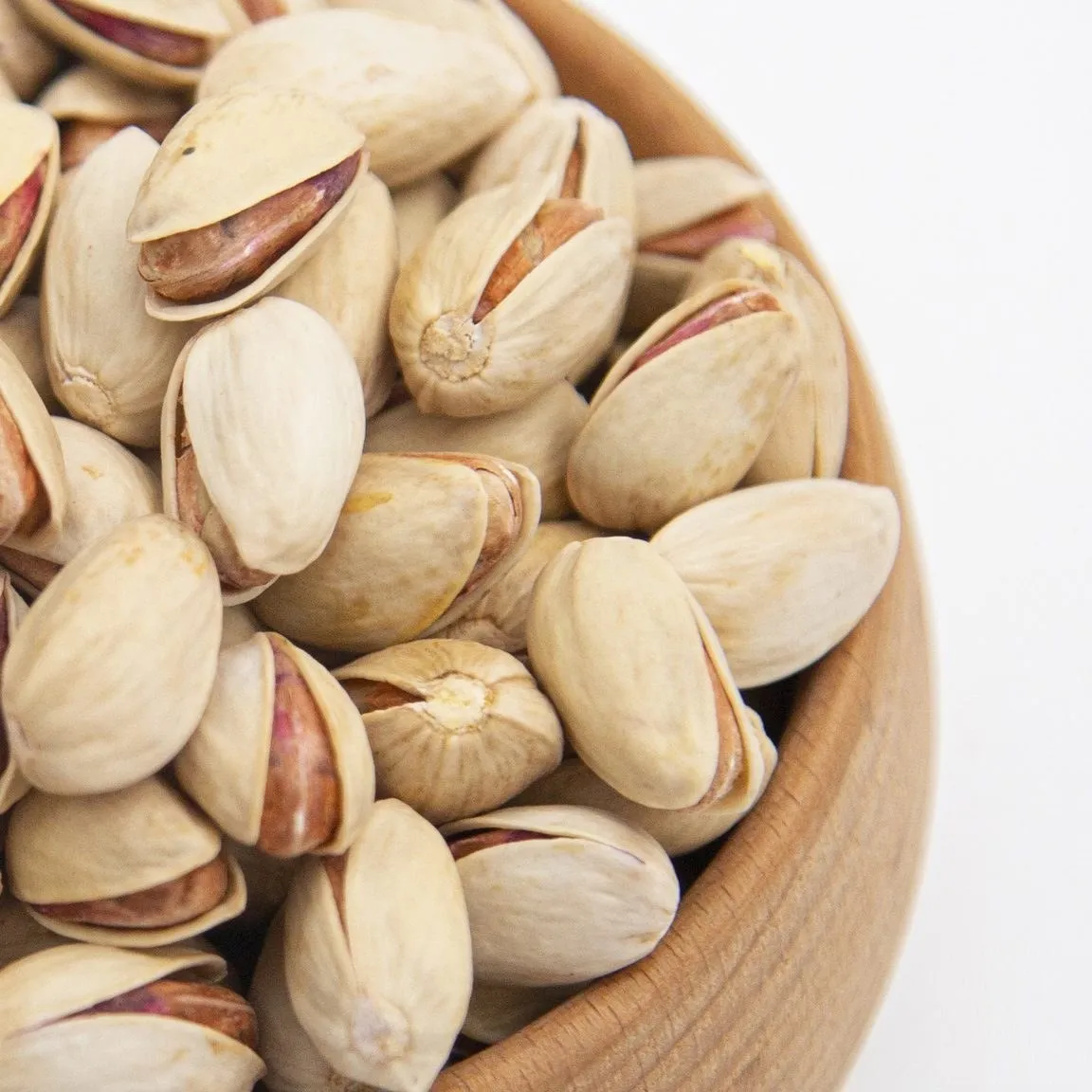Pistachios are a popular and nutritious snack enjoyed by many people around the world. These small, green nuts are not only delicious but also offer several health benefits. However, there are different ways of preparing pistachios, with roasted and raw being the most common options. This article will provide a comprehensive comparison between roasted pistachios and their raw counterparts, evaluating factors such as taste, nutritional content, shelf life, and potential health risks.
1. Taste and Texture:
Roasted Pistachios: One of the most significant advantages of roasted pistachios is the enhanced flavor and aroma that comes from the roasting process. Roasting pistachios deepens their taste, offering a nuttier and more intense flavor profile. Additionally, the roasting process brings out a slightly smoky and caramelized flavor that many individuals find highly satisfying. The texture of roasted pistachios is crispy and crunchy, contributing to the overall enjoyable snacking experience.
Raw Pistachios: On the other hand, raw pistachios have a milder taste compared to their roasted counterparts. They retain their natural, earthy flavor, which is more subtle and delicate. Raw pistachios also have a softer and more tender texture, making them easier to chew. The lack of additional flavors from roasting allows the nutty taste of raw pistachios to shine through, which some individuals prefer.
2. Nutritional Content:
Roasted Pistachios: While the roasting process enhances the taste, it can slightly impact the nutritional content of pistachios. When pistachios are roasted, they lose a small portion of their water content. However, this does not significantly affect their overall nutrient density. Roasted pistachios still contain essential vitamins and minerals, including vitamin E, potassium, iron, and magnesium. Additionally, roasting does not alter the overall caloric value of pistachios.
Raw Pistachios: Raw pistachios are considered to be more nutritionally dense compared to their roasted counterparts. As they are not subjected to the high temperatures of the roasting process, they retain all their natural nutrients, including antioxidants and good fats. Raw pistachios are an excellent source of protein, dietary fiber, and healthy fats such as monounsaturated fatty acids. It is worth noting that while raw pistachios have a higher nutrient content, the difference is relatively small.
3. Shelf Life:

Roasted Pistachios: The roasting process helps to extend the shelf life of pistachios. During roasting, the nuts are exposed to high temperatures, which in turn eliminates any potential bacteria or other microorganisms. The higher temperature also helps to destroy any insect larvae that may be present. As a result, roasted pistachios have a longer shelf life compared to raw pistachios. Properly stored roasted pistachios can last for several months without losing their quality.
Raw Pistachios: Raw pistachios have a slightly shorter shelf life than their roasted counterparts. As they have not been exposed to high temperatures during the roasting process, they retain their natural moisture content. The higher moisture content in raw pistachios can make them more susceptible to spoilage and mold growth. It is recommended to consume raw pistachios within a few weeks of purchase and to store them in a cool, dry place to extend their shelf life.
4. Health Risks:
Roasted Pistachios: While roasted pistachios offer a delicious and crunchy snacking option, there are a few potential health risks associated with them. Some manufacturers may add excessive salt or unhealthy oils during the roasting process, which can lead to increased sodium and trans fat intake. Excessive salt intake can contribute to high blood pressure, while trans fats are known to increase the risk of heart disease. Therefore, it is essential to check the ingredients and opt for roasted pistachios that are minimally processed.
Raw Pistachios: Raw pistachios have a lower risk of containing added salts or unhealthy oils, making them a healthier option in terms of potential health risks. However, as with any raw food product, there is a possibility of bacterial contamination, such as salmonella or E. coli. However, the overall risk of contracting these bacteria from pistachios is relatively low, and consuming raw pistachios that are properly handled and stored greatly reduces this risk.
Conclusion:
Both roasted and raw pistachios offer unique flavor profiles and nutritional benefits. Roasted pistachios have a bolder taste and crunchier texture, while raw pistachios have a milder flavor and a softer texture. Roasting pistachios can slightly affect their nutritional content, although the difference is minimal. Roasted pistachios have a longer shelf life due to the heat exposure during the roasting process. However, it is essential to be mindful of potential health risks associated with roasted pistachios, such as excess salt and unhealthy oils. Raw pistachios, while having a shorter shelf life, retain all their natural nutrients and are less likely to contain added salts or unhealthy oils. Ultimately, the choice between roasted and raw pistachios comes down to personal preference and specific dietary needs.Roasted Pistachios and Raw Pistachios in the Market: Consumer Preferences and Trends
1. Consumer Perceptions and Demands:
Consumer perceptions and preferences play a crucial role in shaping the market for roasted and raw pistachios. Taste and texture are often determining factors for consumers when choosing between roasted and raw nuts. Some prefer the intense flavor and crispy texture of roasted pistachios, while others enjoy the milder and tender nature of raw pistachios. Understanding these preferences is key for businesses to cater to a diverse consumer base and meet their demands effectively.

2. Ingredient Variations and Product Differentiation:
In response to consumer demand, several businesses have started offering different variations of roasted and raw pistachios. For roasted pistachios, businesses have introduced various flavor options, such as honey roasted, salt and vinegar, or spicy varieties, to cater to the evolving taste preferences of consumers. On the other hand, the raw pistachio market has seen an increase in demand for organic and natural varieties, as consumers become more health-conscious and environmentally aware.
3. Packaging and Branding Strategies:
The packaging and branding choices can significantly impact the success of roasted and raw pistachio products. For roasted pistachios, businesses often focus on showcasing the enticing colors and textures of the nuts through transparent or vibrant packaging. Additionally, informative labels that highlight the unique flavors or ingredients used in the roasting process can help attract customers. For raw pistachios, businesses often emphasize the natural aspect of the product through eco-friendly packaging and labeling that highlights the health benefits of consuming raw nuts.
4. Nutritional Marketing and Health Claims:
With the growing interest in healthy snacking options, businesses have an opportunity to market roasted and raw pistachios for their nutritional benefits. Promoting the high protein, fiber, and healthy fat content of both roasted and raw pistachios can appeal to health-conscious consumers. Additionally, highlighting specific antioxidants or micronutrients present in pistachios can help differentiate the products and attract consumers seeking specific health benefits.
5. Accessibility and Availability:
One of the challenges for businesses in the pistachio market is ensuring the accessibility and availability of both roasted and raw pistachios. Roasted pistachios are often readily available in retail stores, convenience stores, and online platforms. However, businesses may need to ensure a consistent supply and distribution network to meet the demand for roasted pistachios. Raw pistachios, on the other hand, are less commonly available in retail stores and may require consumers to seek specialized sources such as health food stores or online retailers.
6. Pricing and Cost Considerations:

Pricing is a crucial factor that affects consumer choices between roasted and raw pistachios. Roasted pistachios tend to have a higher price point compared to raw pistachios due to the additional processes involved in their preparation, such as roasting and flavoring. However, businesses should carefully consider the pricing strategy to remain competitive and meet consumer expectations without compromising profitability.
7. Food Service and Bulk Purchases:
An important segment of the pistachio market is the food service industry, where roasted and raw pistachios are used as ingredients in various recipes or as garnishes. Restaurants, bakeries, and ice cream parlors, among others, often purchase bulk quantities of roasted or raw pistachios for their culinary needs. Businesses in this sector have an opportunity to tap into this market by providing high-quality pistachios in larger packaging sizes that cater to the food service industry’s requirements.
8. Export Opportunities:
The global market for pistachios continues to expand, providing export opportunities for businesses involved in roasted and raw pistachio production. Countries like the United States, Iran, and Turkey are major exporters of pistachios. Understanding the specific preferences and regulations in target export markets can help businesses tailor their products and marketing strategies to cater to international consumers seeking roasted or raw pistachios.
9. Sustainability and Environmental Considerations:
As environmental concerns gain prominence, businesses in the pistachio market must address sustainability issues. This includes focusing on responsible sourcing of nuts, minimizing environmental impacts during processing, and adopting eco-friendly packaging options. Demonstrating commitment to sustainable practices can enhance a brand’s reputation and attract environmentally conscious consumers who prioritize products with minimal ecological footprints.
10. Research and Development:
To remain competitive and innovative, businesses in the roasted and raw pistachio market should invest in research and development efforts. This includes developing new flavor profiles, exploring novel processing techniques, and conducting studies to better understand the nutritional benefits and potential health risks associated with both types of pistachios. Continuous improvement and innovation can help businesses differentiate their offerings and stay ahead of the competition.

Conclusion:
The roasted and raw pistachio market offers a range of opportunities and challenges for businesses. Understanding consumer preferences, product differentiation, effective branding strategies, and price considerations are crucial for success. Whether businesses focus on roasted pistachios with diverse flavors or cater to the demand for natural and organic raw pistachios, it is essential to prioritize quality, sustainability, and nutritional value to meet the evolving needs of consumers. With proper planning and attention to market trends, entrepreneurs and producers can capitalize on the popularity of pistachios and forge a profitable path in this dynamic industry.










